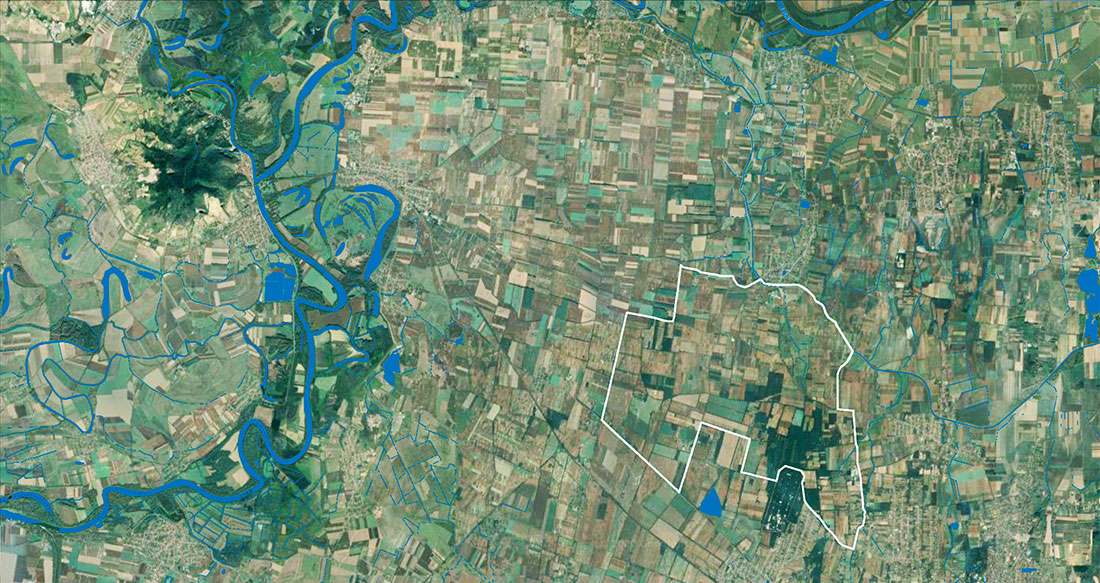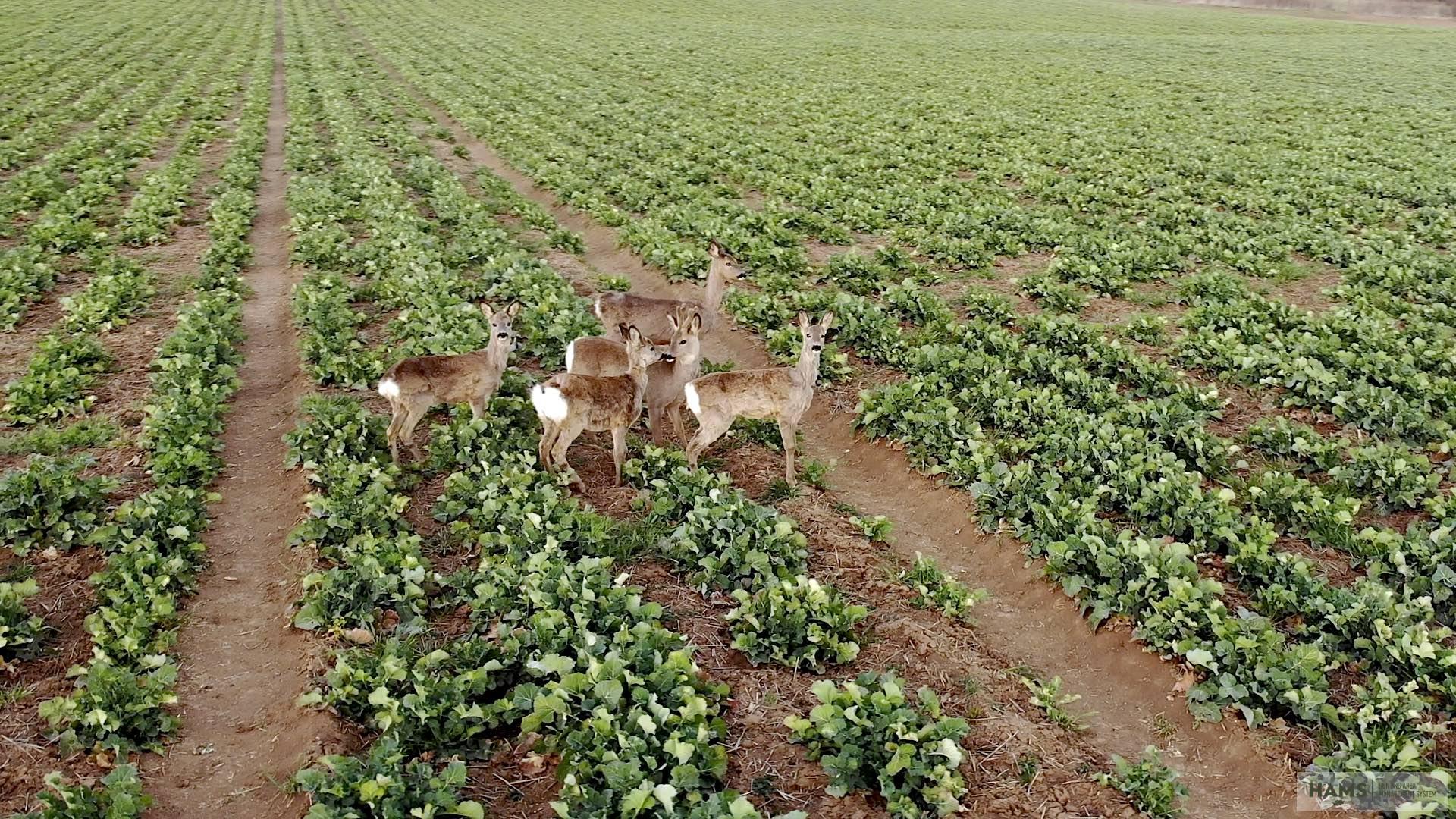The search for answers: the mysteries of a roe deer population (Part 1.)
I’m always impressed by the complexity of nature. It’s both soothing and uplifting to experience time in the forest, to break away from the rat race of everyday life and to relax and rest our eyes on the beauty of nature.
It was no different this early May morning. Walking in the forest, admiring the morning sun reflecting in the dew droplets on the blades of the grass.
In the distance, on a trefoil field bordered by a forest strip, I noticed several roe deer. They were maybe 100 meters away from me.
I tried to count them quickly, but it was not an easy task. Some of them were lying down, others standing, scanning their surroundings, others grazing calmly.
I slowly edged toward them and watched in silence. Finally, I counted 11 animals, 4 bucks and 7 does.
Although I came into the forest to escape my work, I couldn’t stop myself from taking out my binoculars and taking a closer look at them and as I looked at the bucks’ antlers one by one, I noticed that they weren’t good enough for their age. The majority of the bucks still had small beams with short tines, with neither large coronets nor big pearlings.
If you can read the signs then you will already know what that means.
Basically, this is how nature tells you that something is not ideal, not ready, not right. But what is the cause? Too small a living area? Not enough food? Or could it be something else?
I realised that the life of a wildlife manager must go beyond the tasks of engineering and wildlife biology only. The days of a wildlife manager are more than planning, checking and implementing plans, being an outfitter, serving hunters, and observing the land and its beautiful creatures.
We also need the skills of a good detective.
Focussing on the details, finding the signs and connecting the dots, so that in the end we can uncover the truth and make the right decisions. This is how we shape our own story, leave a positive mark upon the history of the land, even for many years to come.
So let me play detective for a bit, Miss Marple from an Agatha Christie novel perhaps, and in the meantime let me tell you a true story, a real, good old game management Poirot worthy crime story.
The Gardener
Let’s take a big jump in space and time and roll back the clock almost 20 years to 2001. Our protagonist is Attila, a tough, restless, dedicated person with a passion for nature and wildlife.
2001 was an important year in his life. He started to manage a 3,500 ha (8,650 acres) plot of land, located in the dry and sandy northeastern part of Hungary, populated with pheasants, brown hares and, of course, roe deer.

Attila’s journey begins here
and of course, starts with the first step of wildlife management: population estimation.
Attila had received information regarding former management efforts, the previous datasets, bag records, the yearly population assessments data, etc. but that is not the same as seeing things with your own eyes.
In management, we have to make our own decisions, ones that will have long-term consequences for the game species that populate the area and with this comes responsibility.
Consequently, during his first weeks, Atilla spent most of his time out on the land. Driving about the land in his jeep, counting, observing, monitoring, following the trails and analysing.
“You have to breathe together with the land and the animals that live on it because as a wildlife manager you are a part of it. You will shape it, garden it. As the saying goes: we are the gardeners of wildlife. And with this comes great responsibility.”
The Garden
After the first few weeks, the situation was obvious.
The habitat was far from ideal, a wildlife population that hadn’t previously been managed well, a lack of habitat development. The result was a deer population of low-weight bucks with small antlers far from being award winning (similar, in fact, to that group I’d seen that morning in May).
But, as they say, the bigger the challenge the sweeter the victory.
Our young game manager knew immediately that if everything were to stay as it was, he would, at best, have to live with a herd of deer that provided little meat and promised little income because of the size of the trophies.
And if the population moved in the direction of overpopulation, then the game damage would be a serious problem for the Game Management Unit*.
Neither scenario would result in a situation that was economical or created value for both the GMU and nature.
A change was needed.
So the next and only logical step to take: set up a long-term management plan!
* ”A Game Management Unit is something like a syndicate in the UK. It is a membership based organisation. Usually, these units are built around landowners who are into hunting and their “friends” or others who can afford the membership fee. Why is it good for everyone? Because the landowners join their lands, therefore, managing the wildlife on a larger scale. The size of these units can range from 6,000 acres to 100,000 acres. In Hungary, each area of a minimum of 3,000 ha (7,413 acres) needs an official game manager.
Those landowners who do not hunt (or cannot afford the costs of hunting and shooting) rent out their land to the local Unit. That means income, protection from game damage and the duty of pest control belongs to the unit. It is a win-win situation.”
Can’t wait to find out what happens next?
Then click here for PART 2: The search for answers: the mysteries of a roe deer population PART 2.




